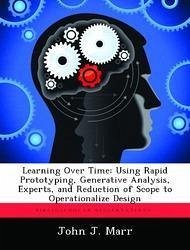Based on experiences with long-duration operations in Iraq and Afghanistan, the United States Army recognizes the need for commanders and their staffs to have new tools and ways of thinking to deal with complex problems. The specific approach the Army is advocating, as outlined in the capstone Field Manual FM 3-0, Operations and the soon-to-be released FM 5-0, The Operations Process (FINAL APPROVED DRAFT), is design. However, design solutions take time to build and implement (frame-test-reframe), while leaders at all levels are often under incredible pressure to act quickly. Additionally commanders and staffs are increasingly confused as to where design fits within the planning continuum. This monograph proposes that design provides commanders with an exceptional tool for military problem-solving, if focused and applied correctly. This means applying a design process as more than just a 'better way'; to do mission analysis or a methodology for developing situational understanding. In short, a design approach, applied as a methodology that emphasizes a deliberate learning process to build understanding over time, instead of a process of in-depth analysis in support of decision-making, enables commanders to simultaneously prepare for the direction of immediate actions and begin the more time-intensive techniques required for problem-management. Using design properly provides a meta-process that supports military planning by defining and continually re-defining problems so that military staffs can build better plans. This research argues that four critical factors, or 'starting blocks,'; help characterize a design approach as emphasizing learning over analysis. A broad review of design theory suggests that four techniques - rapid prototyping, generative analysis, use of experts, and deliberate limitation of scope -- are particularly useful. Since a commander's dilemma of action versus analysis is most acute at the outset of an operation, these concepts would necessari
Hinweis: Dieser Artikel kann nur an eine deutsche Lieferadresse ausgeliefert werden.
Hinweis: Dieser Artikel kann nur an eine deutsche Lieferadresse ausgeliefert werden.








